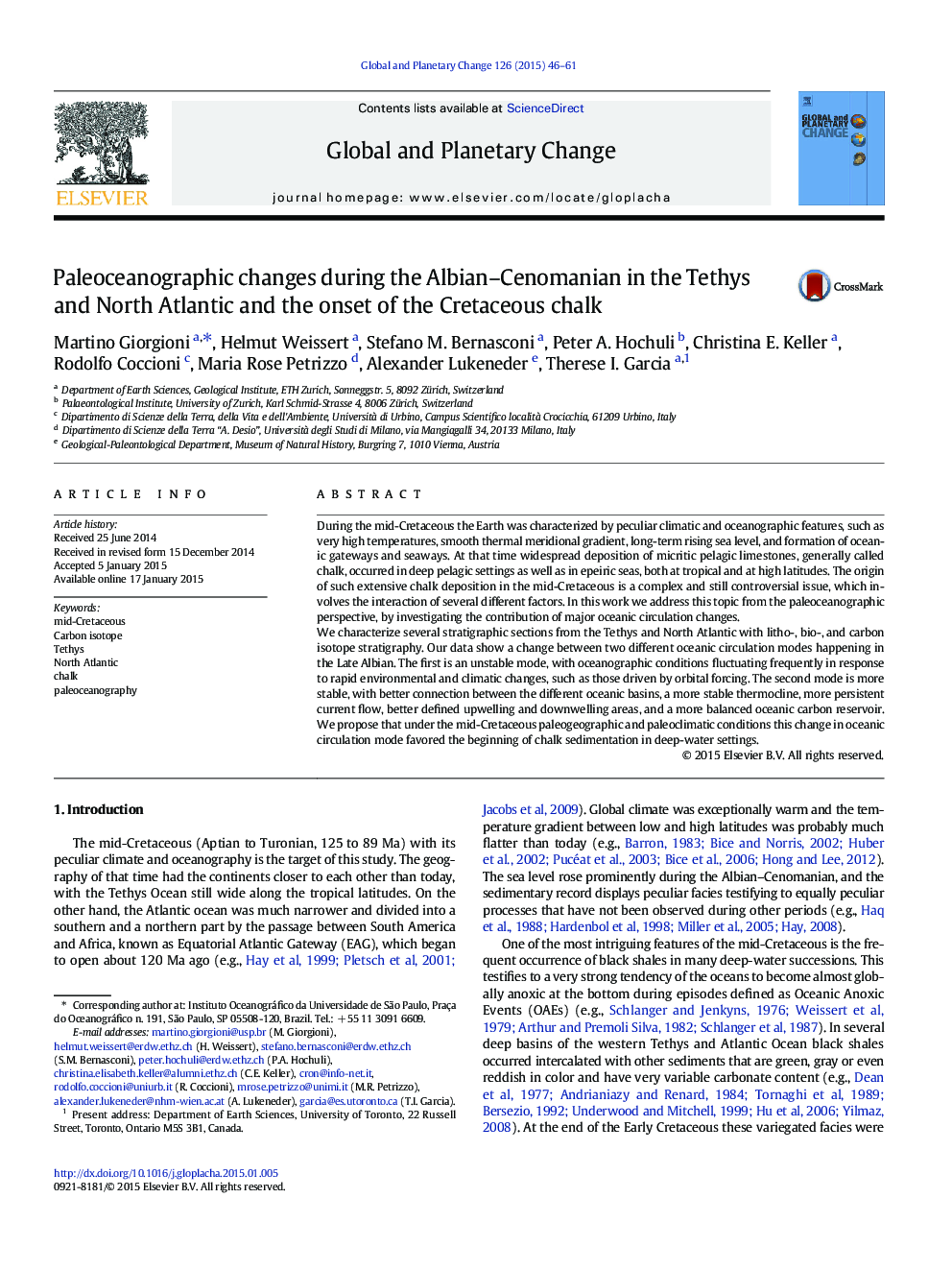| کد مقاله | کد نشریه | سال انتشار | مقاله انگلیسی | نسخه تمام متن |
|---|---|---|---|---|
| 4463380 | 1621656 | 2015 | 16 صفحه PDF | دانلود رایگان |

• 6 Albian–Cenomanian sections across the Tethys and North Atlantic are presented.
• A new Albian δ13C reference curve is established.
• Reconstruction of major Albian–Cenomanian deep-water sedimentary changes
• New hypothesis for the origin of the Cretaceous chalk facies
During the mid-Cretaceous the Earth was characterized by peculiar climatic and oceanographic features, such as very high temperatures, smooth thermal meridional gradient, long-term rising sea level, and formation of oceanic gateways and seaways. At that time widespread deposition of micritic pelagic limestones, generally called chalk, occurred in deep pelagic settings as well as in epeiric seas, both at tropical and at high latitudes. The origin of such extensive chalk deposition in the mid-Cretaceous is a complex and still controversial issue, which involves the interaction of several different factors. In this work we address this topic from the paleoceanographic perspective, by investigating the contribution of major oceanic circulation changes.We characterize several stratigraphic sections from the Tethys and North Atlantic with litho-, bio-, and carbon isotope stratigraphy. Our data show a change between two different oceanic circulation modes happening in the Late Albian. The first is an unstable mode, with oceanographic conditions fluctuating frequently in response to rapid environmental and climatic changes, such as those driven by orbital forcing. The second mode is more stable, with better connection between the different oceanic basins, a more stable thermocline, more persistent current flow, better defined upwelling and downwelling areas, and a more balanced oceanic carbon reservoir. We propose that under the mid-Cretaceous paleogeographic and paleoclimatic conditions this change in oceanic circulation mode favored the beginning of chalk sedimentation in deep-water settings.
Journal: Global and Planetary Change - Volume 126, March 2015, Pages 46–61